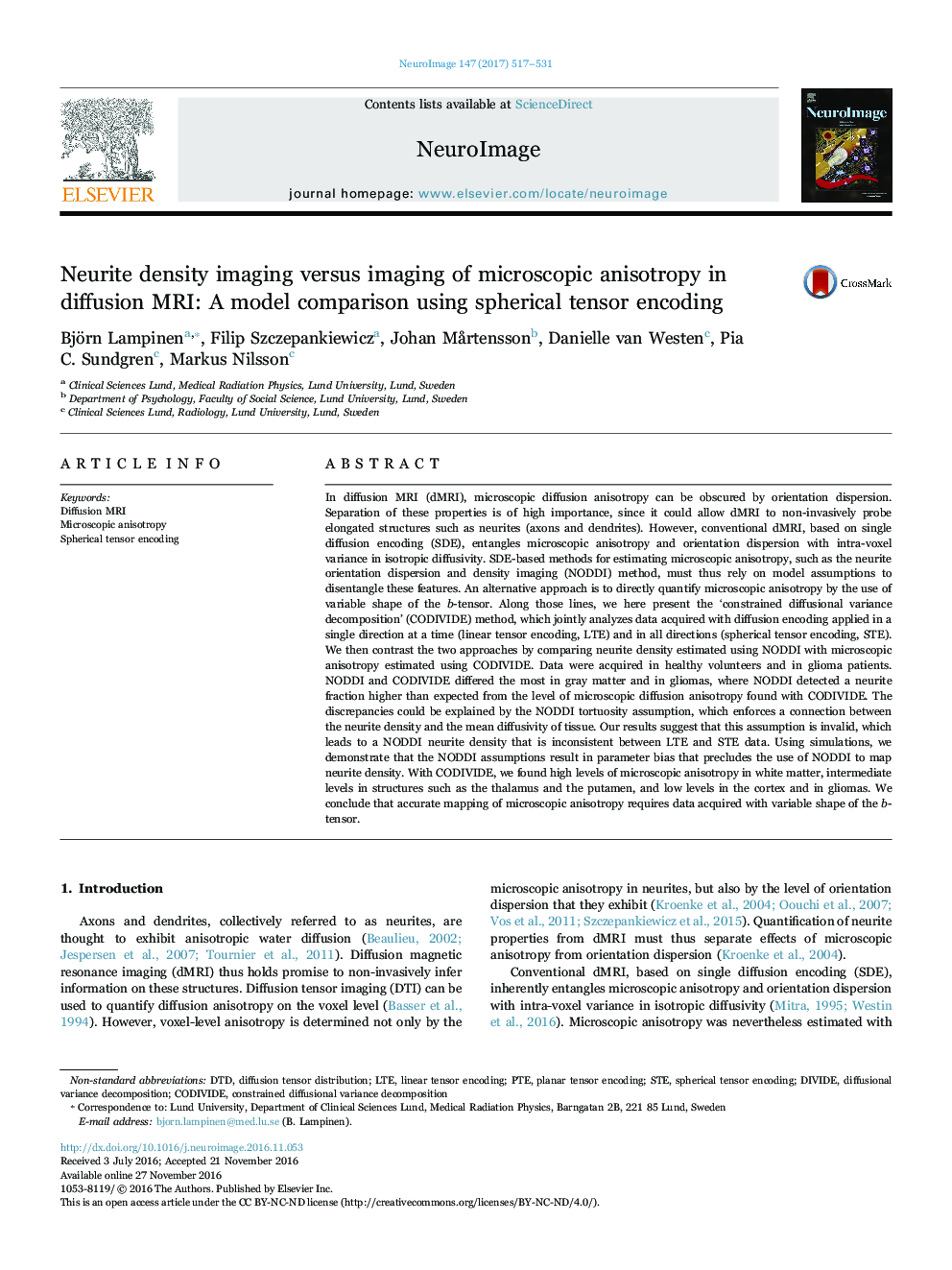| کد مقاله | کد نشریه | سال انتشار | مقاله انگلیسی | نسخه تمام متن |
|---|---|---|---|---|
| 5631523 | 1580863 | 2017 | 15 صفحه PDF | دانلود رایگان |

- Neuroimaging was performed with linear and spherical tensor encoding (LTE and STE) at 3Â T and 7Â T.
- Microscopic anisotropy was quantified by two methods: NODDI and CODIVIDE.
- NODDI predictions of microscopic anisotropy were not supported by STE data.
- Levels of microscopic anisotropy were low in the cortex and high in the white matter.
In diffusion MRI (dMRI), microscopic diffusion anisotropy can be obscured by orientation dispersion. Separation of these properties is of high importance, since it could allow dMRI to non-invasively probe elongated structures such as neurites (axons and dendrites). However, conventional dMRI, based on single diffusion encoding (SDE), entangles microscopic anisotropy and orientation dispersion with intra-voxel variance in isotropic diffusivity. SDE-based methods for estimating microscopic anisotropy, such as the neurite orientation dispersion and density imaging (NODDI) method, must thus rely on model assumptions to disentangle these features. An alternative approach is to directly quantify microscopic anisotropy by the use of variable shape of the b-tensor. Along those lines, we here present the 'constrained diffusional variance decomposition' (CODIVIDE) method, which jointly analyzes data acquired with diffusion encoding applied in a single direction at a time (linear tensor encoding, LTE) and in all directions (spherical tensor encoding, STE). We then contrast the two approaches by comparing neurite density estimated using NODDI with microscopic anisotropy estimated using CODIVIDE. Data were acquired in healthy volunteers and in glioma patients. NODDI and CODIVIDE differed the most in gray matter and in gliomas, where NODDI detected a neurite fraction higher than expected from the level of microscopic diffusion anisotropy found with CODIVIDE. The discrepancies could be explained by the NODDI tortuosity assumption, which enforces a connection between the neurite density and the mean diffusivity of tissue. Our results suggest that this assumption is invalid, which leads to a NODDI neurite density that is inconsistent between LTE and STE data. Using simulations, we demonstrate that the NODDI assumptions result in parameter bias that precludes the use of NODDI to map neurite density. With CODIVIDE, we found high levels of microscopic anisotropy in white matter, intermediate levels in structures such as the thalamus and the putamen, and low levels in the cortex and in gliomas. We conclude that accurate mapping of microscopic anisotropy requires data acquired with variable shape of the b-tensor.
Journal: NeuroImage - Volume 147, 15 February 2017, Pages 517-531